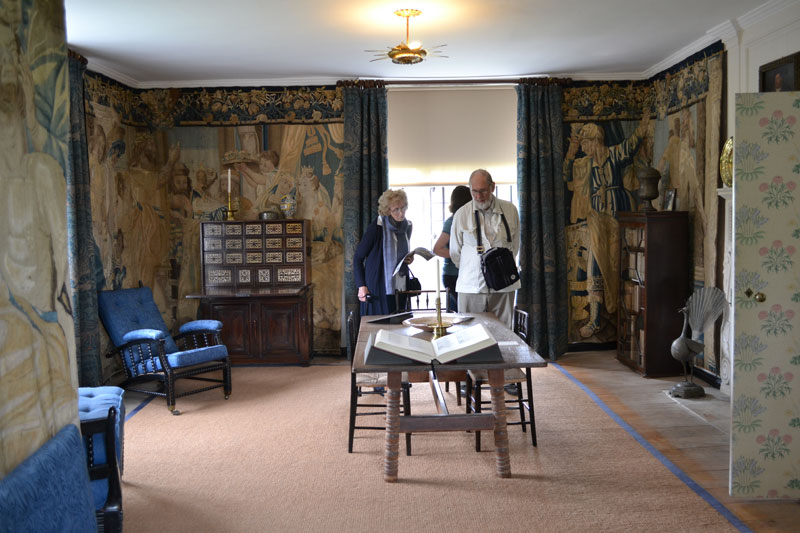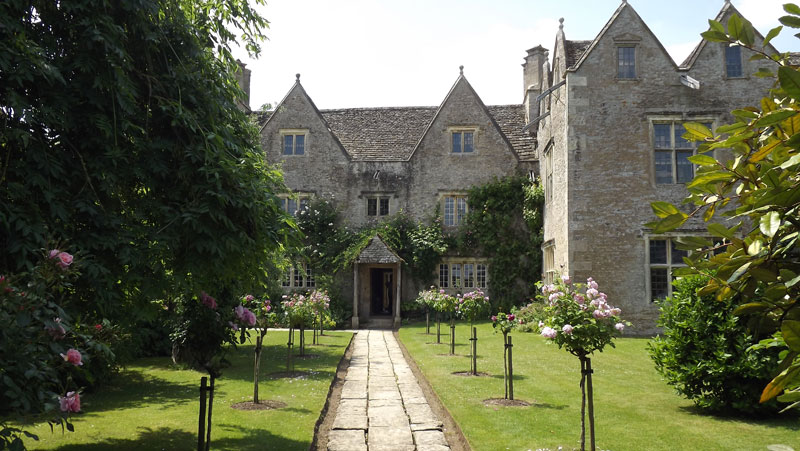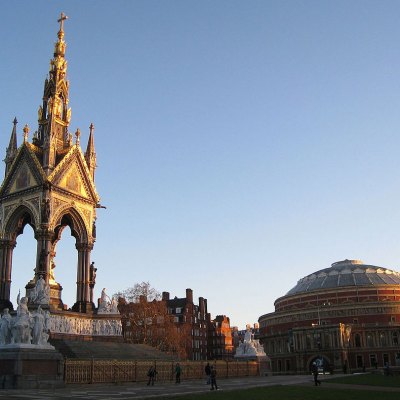The Heritage Lottery Fund has announced the opening phase of a £4.7 million grant to support conservation and development at Kelmscott Manor, the Cotswold home of the Victorian designer and poet, William Morris. This precious rural building is still best known for Charles Gere’s woodcut view of the East Front (1892), used by Morris as the frontispiece to his socialist romance, News from Nowhere.
The hero of that work, William Guest, falls asleep in industrial Hammersmith and wakes up in a London transformed by socialist and ecological revolution. He then heads upriver into the fields, as if moving from the shallows of utopia to a deeper contentment, just as Morris did on similar boat trips between his Hammersmith home and his rural one. Guest ends his journey, as the caption to Gere’s woodcut makes clear, at Kelmscott Manor: ‘THIS’, we are assured, ‘IS THE PICTURE OF THE OLD HOUSE BY THE THAMES TO WHICH THE PEOPLE OF THIS STORY WENT.’
News From Nowhere (1893), Kelmscott Press; Charles March Gere; William Morris. William Morris Gallery, London Borough of Waltham Forest

Gere’s composition aptly rehearses Morris’s persistent concern with the approach to happiness. A flagged pathway leads invitingly to a porch and doorway. It is flanked by fruit trees, and then by Morris’s foliated border, each element adding to the pleasant sense of enclosure. Morris’s business activities in London prevented him from living permanently at Kelmscott, and it is perhaps for this reason that he remained so imaginatively involved in returning to the ‘many-gabled old house’, and also why so many readers and visitors have caught the appeal.
Yet Morris’s early association with the place was not happy at all. He took the lease jointly with Dante Gabriel Rossetti, who in 1871 was having an affair with his wife, Jane. The earliest images are thus painted by Rossetti, the Manor serving as a backdrop to portraits of his muse and lover. Morris tolerated the situation, and stayed out of the way, even travelling to Iceland to regain some equanimity; but his dissatisfaction shows through in complaints that ‘Rossetti has set himself down at Kelmscott as if he never meant to go away; and not only does that keep me from that harbour of refuge […] but also he has all sorts of ways so unsympathetic with the sweet simple old place’.
Water Willow (1871) by Dante Gabriel Rosetti is a portrait of Jane Morris. Kelmscott Manor can be seen in the background on the left. Photo: PKM/Wikimedia Commons (used under public domain licence)

It is quite typical of Morris, who found human relationships difficult, to project displaced feelings onto a building. Far from wasting sentiment on an inanimate object, the effect is to animate and enliven, indeed to cultivate romance (defined by him as ‘a power of making the past part of the present’). In one lyrical account of the house, he enumerates a ‘reasonable love’ for it, his prose sparkling with architectural particularity: he notes the ‘well-laid rubble stone’ walls, which have been ‘buttered over, so to say, with thin plaster which has now weathered to the same colour as the stone of the walls’, and the ‘beautiful stone slates of the district’, a ‘most lovely covering’, giving one ‘the same sort of pleasure in their orderly beauty as a fish’s scales or a bird’s feathers’.
Morris has Guest describe ‘strange and quaint garrets amongst the great timbers of the roof’. The original of these attics appears in a haunting set of photographs taken in 1896 by Frederick Evans. Like Morris’s architectural descriptions, they lack a human subject, but nevertheless suggest life. A soft light illuminates the hewn edges of post and beam, the lived-in character bringing to mind the ‘old time tillers and herdsmen’ who once sheltered there. Shared occupancy with the dead ensures that the house’s charm is always in some way mysterious or other, the opposite of twee.
Kelmscott Manor: In the Attics (No. 1) (1986), Frederick H. Evans

Morris dwelt, too, on the unbroken relation between house and grounds. The garden, he wrote, ‘looks in fact as if it were, if not a part of the house, yet at least the clothes of it’, while the parlour inside admits ‘the green reflections of the garden’. A similar porosity informs Kelmscott’s place in history. Though a champion of the medieval, Morris proposes a theory of uneven architectural time: despite being ‘Elizabethan in appearance’, he explains, the house is actually ‘much later in date’, ‘as in that out of the way corner people built Gothic till the beginning or middle of last century’. Vague references to ‘the old house’ capture this melded sense of time, as does the tapestry (c. 1600) that hangs inside, so faded that it has entered into a new and different state. The house, as Morris imagines it, has ‘grown up out of the soil and the lives of those that lived in it’, evolving its own temporal and spatial culture.
© Society of Antiquaries of London (Kelmscott Manor)

Despite this sense of exemption – or, perhaps, because of it – Morris alludes to ‘a half-anxious sense’ of delight, a feeling perhaps that all this might be taken away. May Morris made the house her home after her father’s death, and it was in order to protect the character of the estate that she bequeathed it to the University of Oxford. That gift proved burdensome. In 1962, the University successfully challenged the charitable basis of the trust, and the estate devolved upon the Society of Antiquaries. By that time, the house was in poor repair and major works were required. The disaster of collapse was averted, but the modernising methods employed, and the cementitious and impermeable materials used, have impaired its historic integrity (to this day, Morris’s preferred covering of lime wash for internal walls is not much in evidence).
So there is much to be put right in the home of the man who founded the Society for the Protection of Ancient Buildings. The current project draws on the Kelmscott Manor & Estate Conservation Plan (Nov. 2013), which identifies a range of issues, including a 1960s stairwell that interrupts Evans’s old view of the attics. Plans ‘to double visitor numbers’ and ‘improve visitor facilities’ need careful handling, but the signs are that the Society of Antiquaries understands the challenge, and will strike the right balance between improving access and safeguarding what Morris called the ‘thin thread of tradition’.
Kelmscott Manor historic house and museum is open to the public April to October.



